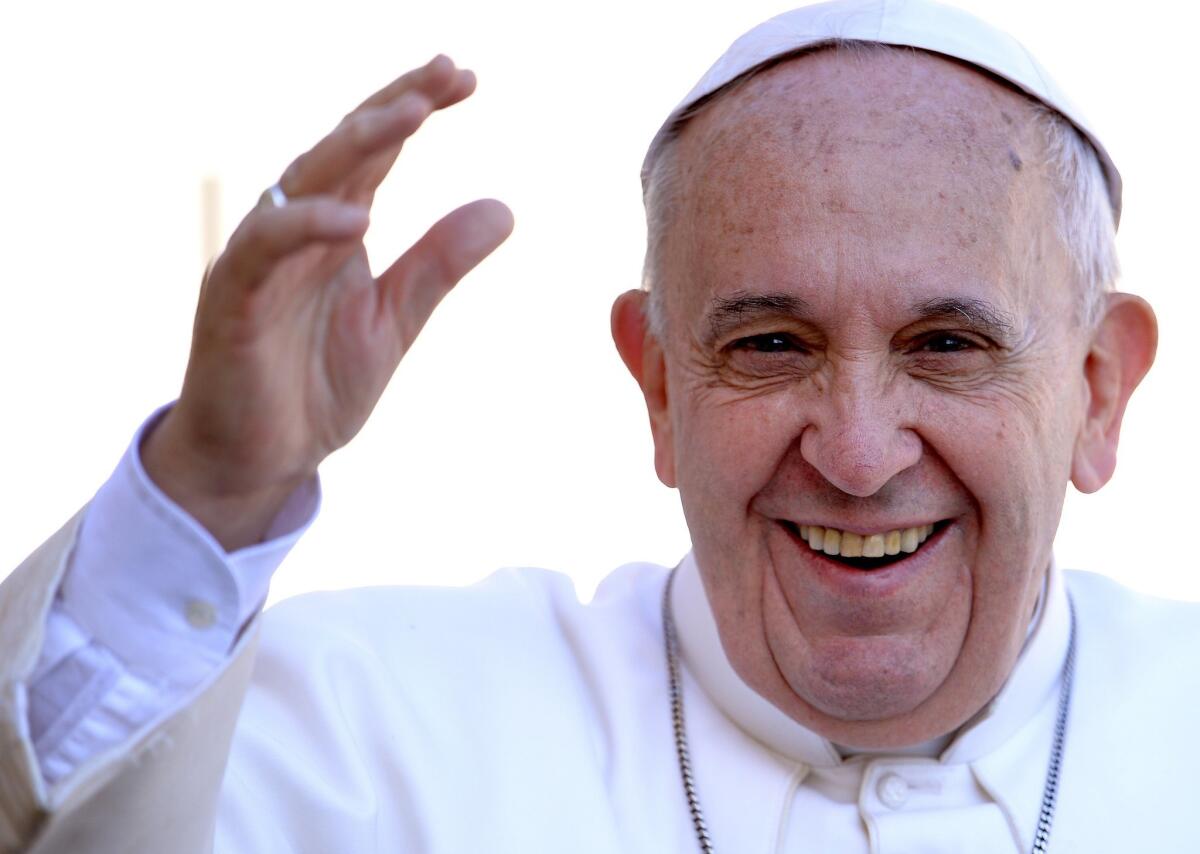Pope Francis to stop in Cuba en route to U.S., Vatican announces

Pope Francis salutes the crowd as he arrives for his weekly general audience in St. Peter’s Square at the Vatican on April 22.
- Share via
Reporting from Mexico City — Pope Francis on Wednesday confirmed he will travel to Cuba before his trip to the United States in September.
His spokesman, Father Federico Lombardi, announced at the Vatican that Francis had accepted the invitations of Cuban government officials and the island’s Roman Catholic bishops to visit.
Francis’ decision comes at a time of a historic renewal of diplomatic ties between the United States and Cuba after more than half a century, a breakthrough for which the pope has received much credit. Adding Cuba to the itinerary seals that accomplishment, in which he served as a bridge between the two erstwhile enemies.
As The Times reported in December after Presidents Obama and Raul Castro announced the thaw in relations, Francis had worked behind the scenes, steering complex negotiations between representatives of the two governments and then overseeing the final talks in Rome in October.
“Today we are all happy because we have seen how two peoples, who were far apart for many years, yesterday took a step to get closer,” Francis said after the presidents’ announcement.
The first pontiff from the Americas, Francis, an Argentine and a Jesuit, is scheduled to begin a three-city tour of the United States on Sept. 23. His agenda includes speeches at the United Nations in New York and before Congress in Washington. In addition, he will meet with Obama and speak to a gathering of Catholic families in Philadelphia.
Both of Francis’ previous two predecessors also traveled to Cuba. In the first such trip by a pontiff, John Paul II went in 1998 for a groundbreaking meeting with Fidel Castro that is largely credited with the beginnings of slightly more freedom for the island’s Catholics.
Benedict XVI followed in 2012, when he saw Fidel’s successor, brother Raul Castro, and offered an important boost to Cardinal Jaime Ortega, who was also engaged in a form of rapprochement with the Communist government.
Benedict at the time reiterated long-standing Vatican positions -- condemning both Marxism and the U.S. embargo against Cuba -- but he recognized the beginnings of change.
“It must be said with joy that in Cuba, steps have been taken to enable the church to carry out her essential mission of expressing her faith openly and publicly,” Benedict said in Havana.
“Nonetheless, this must continue forward, and I wish to encourage the country’s government authorities to strengthen what has already been achieved and advance along this path of genuine service to the true good of Cuban society as a whole.”
Mario Paredes, an expert on the church in Latin America with the American Bible Society, said Francis’ decision to travel to Cuba was in keeping with his commitment to helping Latin America come to terms with the role the Cuban Revolution played in the region.
Paredes noted that the then-archbishop of Buenos Aires, Jorge Mario Bergoglio, who would later become Pope Francis, wrote a book about the first papal visit to the island in 1998, entitled “Dialogues between John Paul II and Fidel Castro.”
“Even then he was already reflecting on Cuba and in defense of dialogue ... as a way of mending situations marred by mistrust and confrontation,” Paredes said in a telephone interview from New York.
Follow @TracyKWilkinson on Twitter for more news from Latin America
More to Read
Sign up for Essential California
The most important California stories and recommendations in your inbox every morning.
You may occasionally receive promotional content from the Los Angeles Times.














